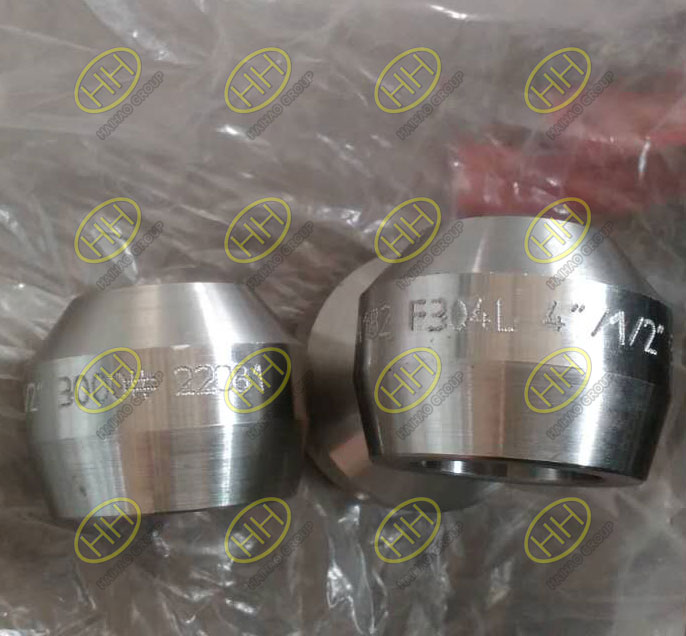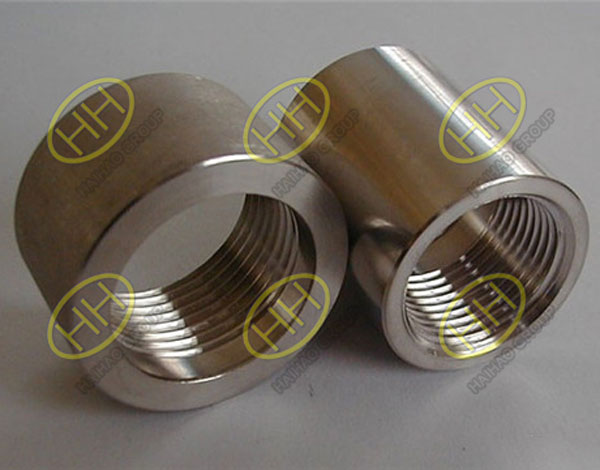What are ASME B16.11 ASTM A182 F304 pipe fittings?
In the field of piping, ASME B16.11 is the standard that governs the requirements for forged fittings, including elbow, tee, cross, coupling, and union, among others. Meanwhile, ASTM A182 F304 is the specification for forged or rolled alloy and stainless steel pipe flanges, fittings, valves, and parts for high-temperature, corrosive, or moderately severe service conditions. Together, ASME B16.11 and ASTM A182 F304 provide the guidelines for manufacturing and using pipe fittings that meet the safety, performance, and reliability standards of industrial applications.
ASME B16.11 specifies the design, dimensions, material selection, marking, testing, and inspection criteria for forged steel fittings with socket-welding and threaded end connections. The standard applies to fittings made from carbon steel, alloy steel, stainless steel, nickel alloys, and any other suitable material that can withstand high pressure, temperature, and impact loads. The fittings should be able to provide a leak-tight seal and resist corrosion and erosion from the fluid conveyed in the piping system. The socket-welding fittings shall have a socket depth that allows enough engagement with the pipe for proper alignment and welding. The threaded fittings shall have a taper thread in accordance with ASME B1.20.1 or a straight thread with shoulder in accordance with ASME B1.13M.ASME B16.11 forged fittings are designated as Class 2000, 3000, and 6000 for threaded end fittings and Class 3000,6000,and 9000 for socket-weld end fittings.The nominal size of forged fittings from 1/2″ to 4″.
ASTM A182 F304 covers the grades of austenitic stainless steel, including F304, F304L, F304H, F316, F316L, F317, and F317L, among others, that have distinct chemical compositions, mechanical properties, and corrosion resistance. The material specification defines the maximum allowable carbon content, which is 0.08% for F304 and F304L, and the minimum yield and tensile strength, which are 30 ksi and 75 ksi, respectively, for all grades. The material shall be forged or rolled and heat-treated to achieve the required properties. The finished products shall be free from defects that may affect their performance, such as cracks, porosity, laminations, and surface imperfections.
When it comes to manufacturing ASME B16.11 ASTM A182 F304 pipe fittings, the process involves several steps, such as raw material procurement, forging or machining, heat treatment, machining or finishing, inspection, and marking. The raw materials, which may be bars, billets, or ingots, shall be tested and certified for their chemical composition, mechanical properties, and traceability. The forging or machining process involves shaping the material into the desired form using hammers, presses, or CNC machines. The heat treatment process involves subjecting the material to a specific temperature and time to modify its microstructure and properties. The machining or finishing process involves removing any surface defects or excess material and providing the required surface finish. The inspection process involves verifying the product’s conformity to the specified requirements through various non-destructive and destructive testing methods. The marking process involves stamping the product with the manufacturer’s name, material grade, size, and other relevant information.
ASME B16.11 ASTM A182 F304 pipe fittings are essential components of industrial piping systems that require high strength, corrosion resistance, and leak-tightness. At Haihao Group, we are committed to providing our customers with the highest quality pipe fittings that are suitable for use in a variety of extreme environments. Contact us today to learn more about our products and how we can help you with your next project.Email:sales@haihaogroup.com


